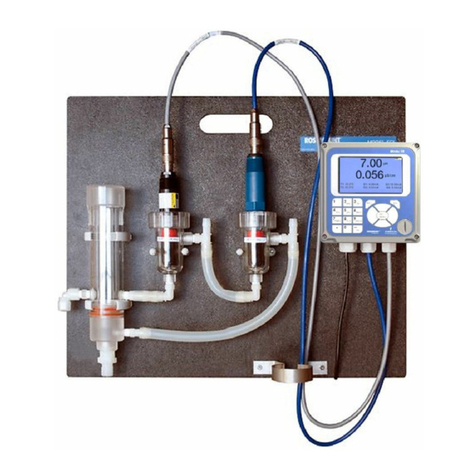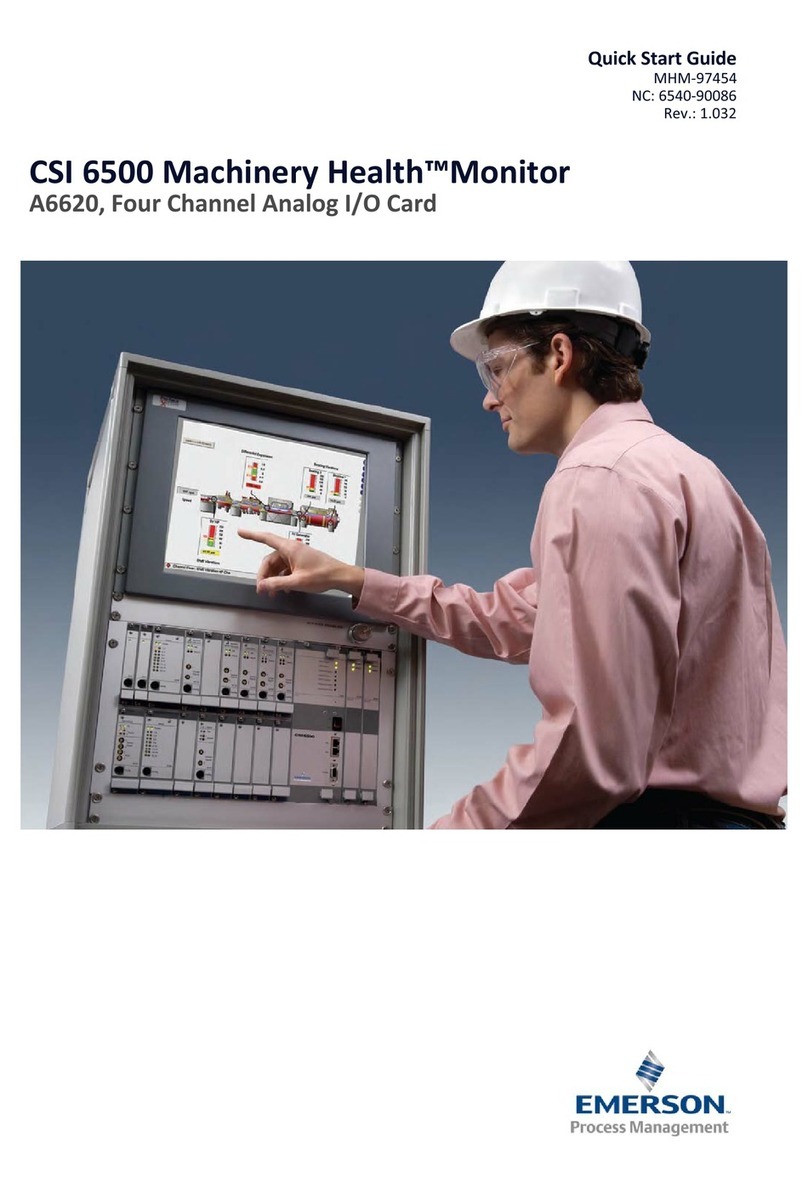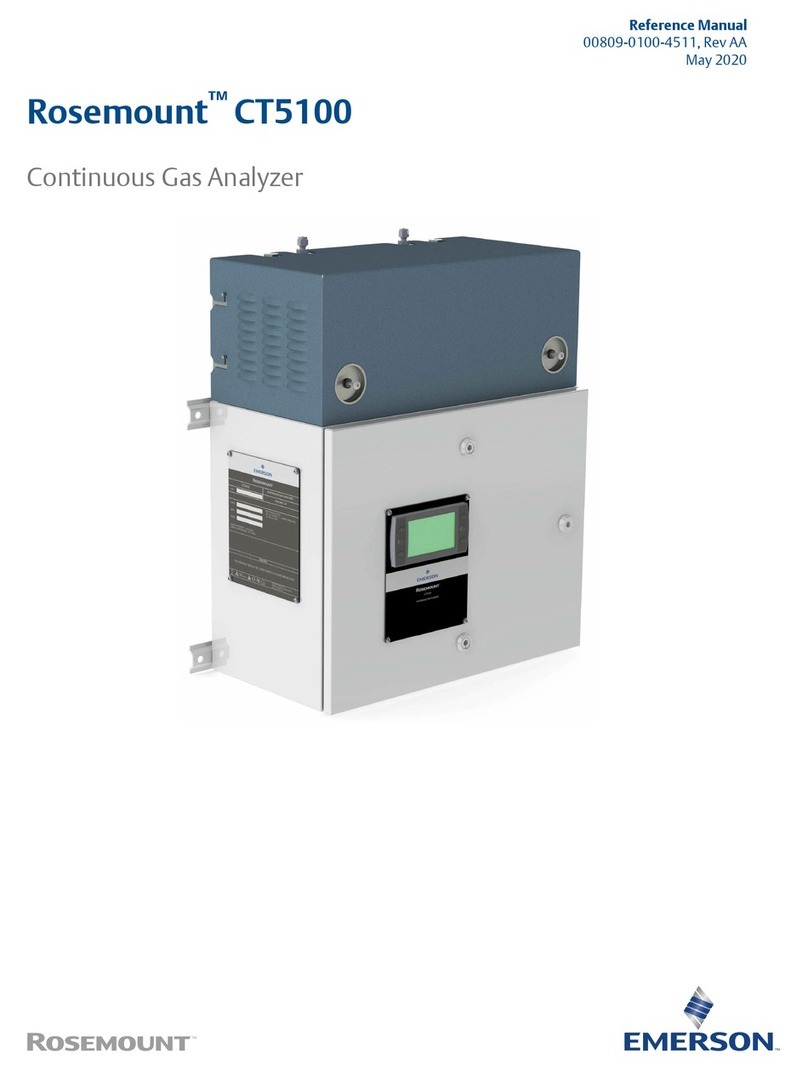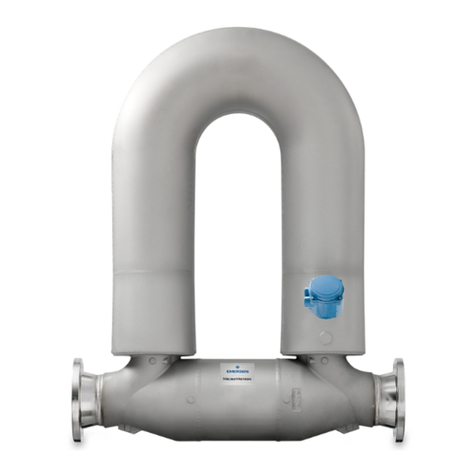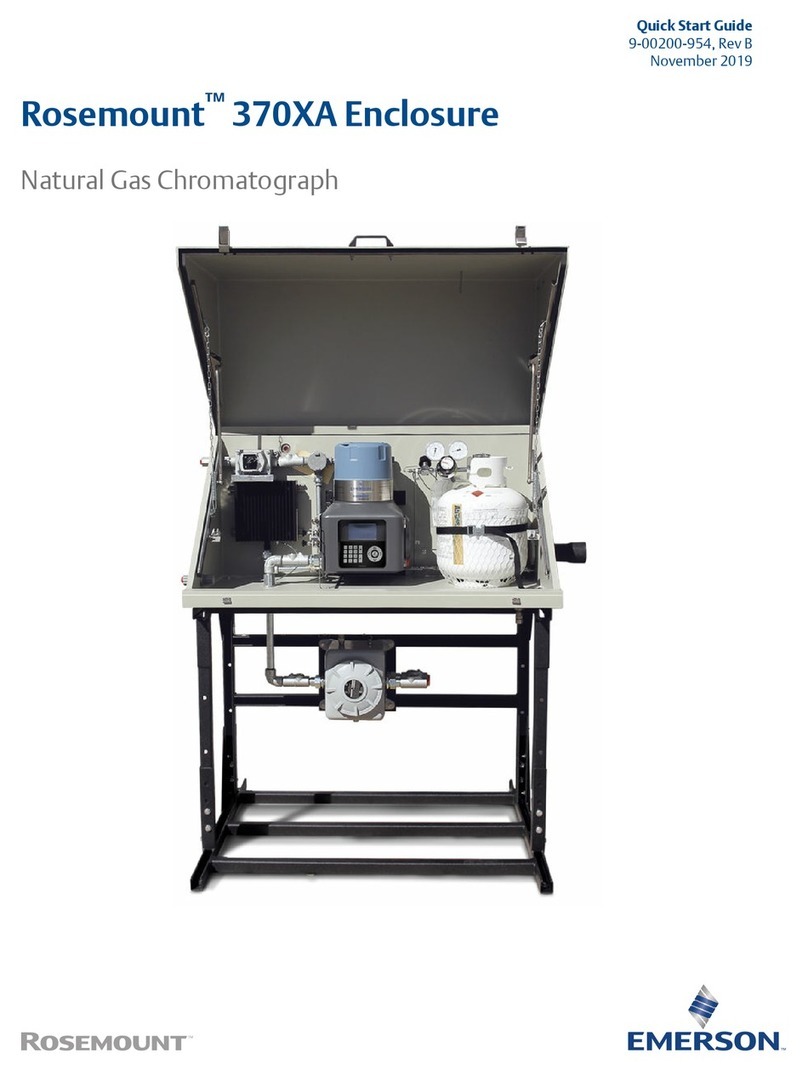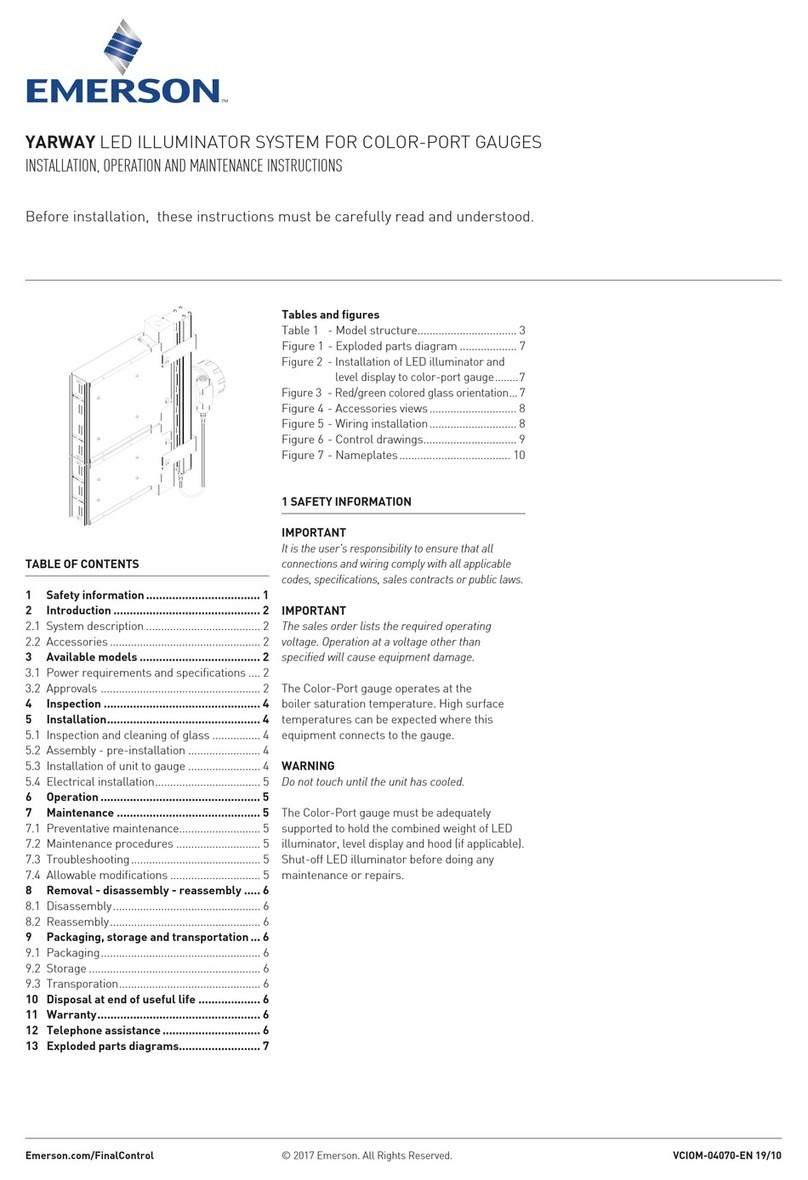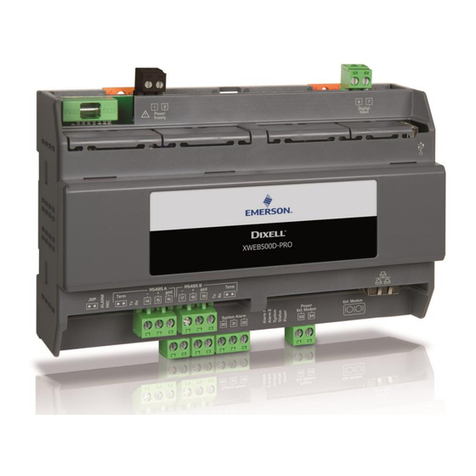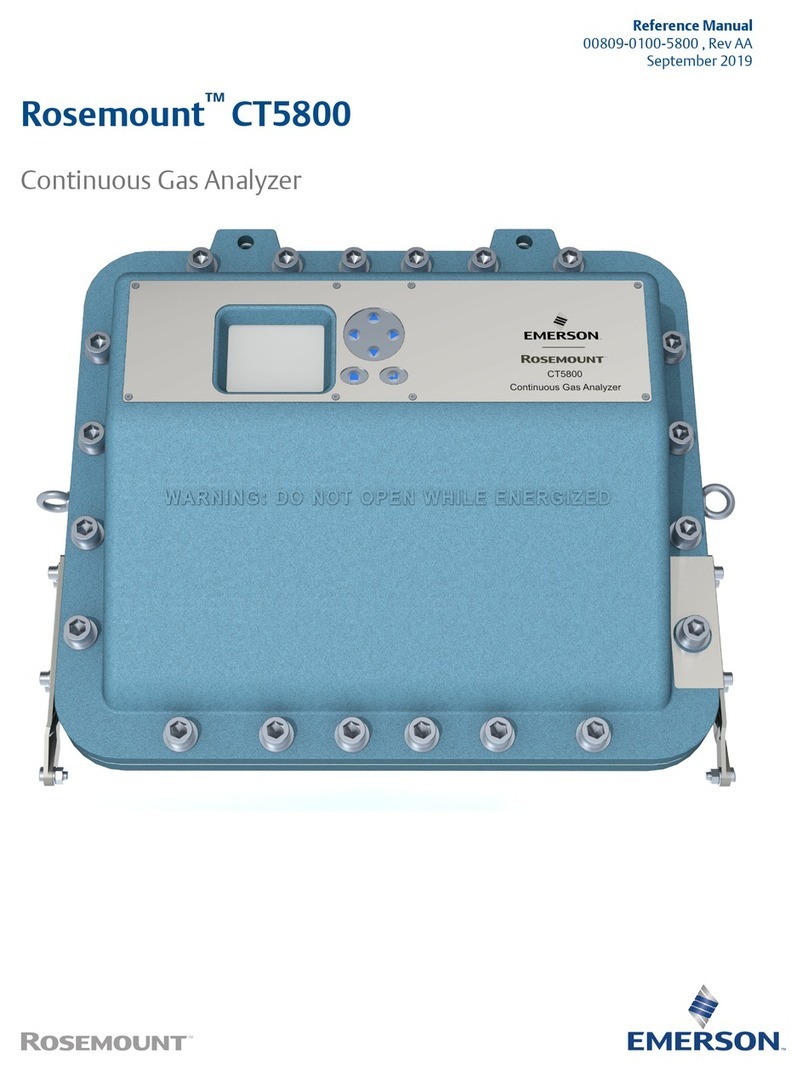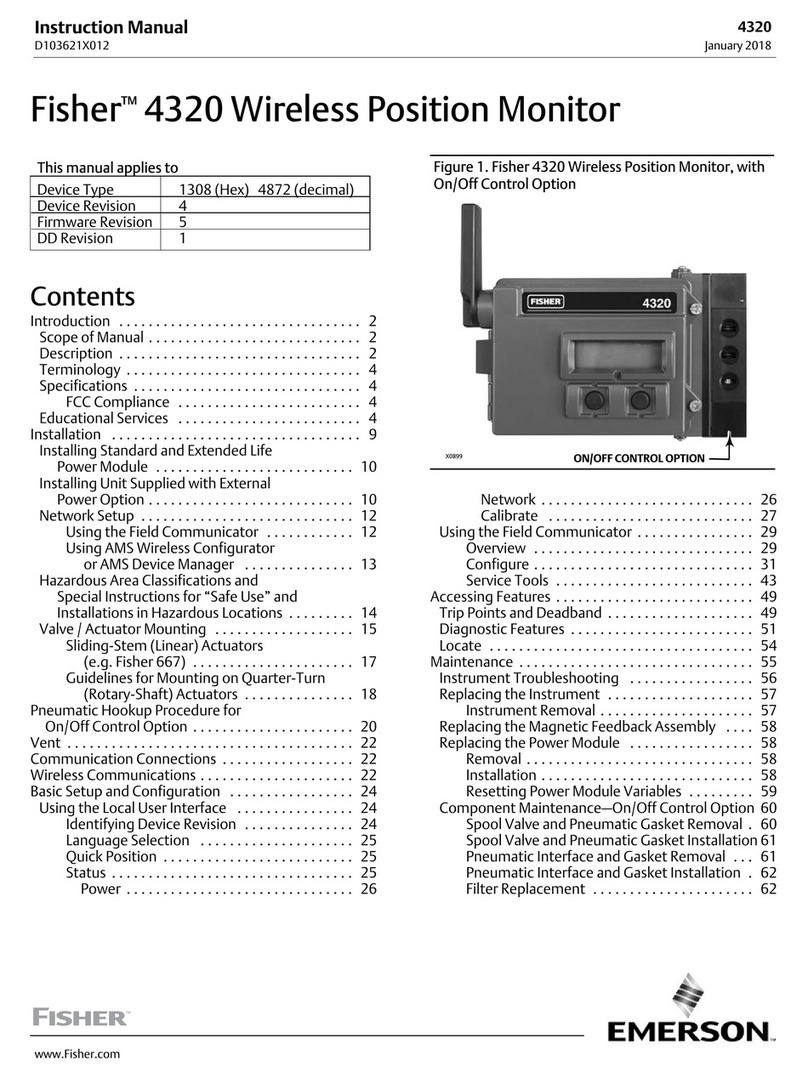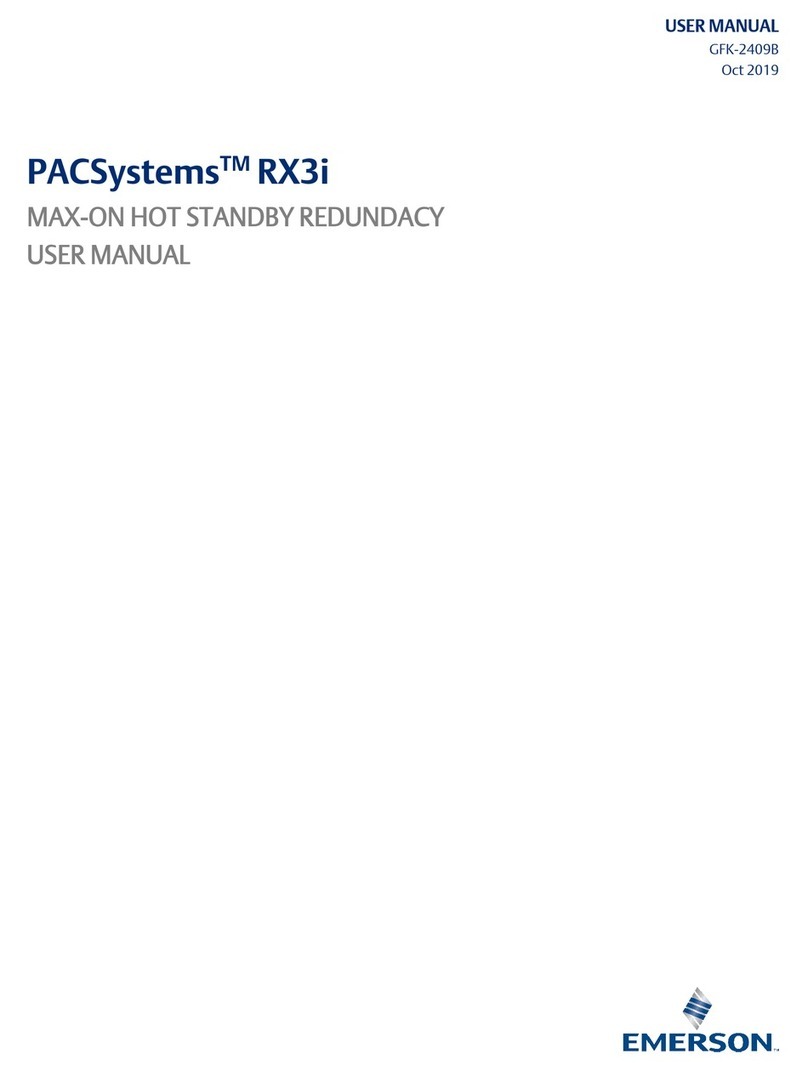3
MODEL 385+ pH/ORP SECTION 2.0
INSTALLATION
SECTION 2.0
INSTALLATION
2.1 UNPACKING AND INSPECTION. Inspect the outside
of the carton for any damage. If damage is detected,
contact the carrier immediately. Inspect the instrument
and hardware. Make sure all items in the packing list
are present and in good condition. Notify the factory if
any part is missing.
NOTE
Save the original packing cartons and
materials as most carriers require proof of
damage due to mishandling, etc. Also, if it
is necessary to return the instrument to the
factory, you must pack the instrument in the
same manner as it was received. Refer to
Section 6.0 for instructions.
2.2 MECHANICAL INSTALLATION. The Model 385+
is available in two versions, the retraction version
(Code 02) and the insertion/submersion version (Code
03, & 04). Please refer to the appropriate section below.
2.2.1 Retraction Option. (Code option -02) The Model
385+ Sensor may be installed through a weldalet or in
a pipe tee or “Y”, as shown in Figure 2-1, when used
with a ball valve. Insert the end of the sensor to a depth
sufficient to ensure that the glass bulb is continuously
wetted by the process fluid. The Model 385+ can also
be inserted directly into the process without the use of
a ball valve for applications not requiring continuous
operation during sensor maintenance (Figure 2-2).
ALLOW SUFFICIENT ROOM FOR SAFE RETRAC-
TION AND INSERTION OF THE SENSOR. PERSONNEL
SHOULD HAVE ROOM FOR STABLE FOOTING
WHILE PERFORMING REMOVAL OR INSERTION
OF THE SENSOR.
The sensor must be mounted within 10-90 degrees of
the horizontal with the tip pointed downward, thus
keeping air bubbles out of the pH sensitive glass bulb.
Bubbles settled in the glass bulb disrupt the electrical
continuity between the pH sensitive glass and the
silver/silver chloride measuring element.
If the retraction version is to be installed without a ball
valve follow the installation procedure for insertion
service (Section 2.2.2). Perform the following steps for
sensor installation through a ball valve:
1. Carefully remove the liquid filled rubber boot which
protects the glass electrode and keeps the liquid
junction wet during shipping and storage. Discard
the liquid and boot. Make sure the lubricated O-ring
is in place in the groove inside the male connector
on the sensor body (Figure 4-1, item A).
2. With the male connector on the sensor’s body,
insert the sensor into the ball valve until it gently
touches the closed valve. The molded electrode
guard will protect the glass bulb from breakage.
3. Thread the male connector body tightly into the ball
valve assembly. DO NOT tighten the hex nut on the
male connector body; doing so would not allow the
sensor to be inserted through the ball valve.
4. Pull back hard on the sensor assembly, as if trying to
remove the sensor, to be certain that the sensor
cannot come free of the ball valve assembly. The
built-in retraction stop will butt against the shoulder
of the male connector if properly installed.
5. After confirming that the sensor assembly is prop-
erly secured by the valve assembly, the valve may
be opened and the sensor positioned into the
process at the desired depth and orientation.
6. While holding the sensor in position, tighten the
hex nut of the male connector to firmly secure the
sensor in place. When the hex nut is tightened, the
Teflon ferrule inside the compression fitting clamps
the sensor tube. (See Figure 4-2.)
NOTE
A stainless steel ferrule is available if the
TEFLON ferrule does not inadequately
grip. When using the metallic ferrule, care
must be taken to avoid over tightening and
damaging the sensor tube. If the male con-
nector leaks during insertion or retraction,
replace the O-ring in the male connector.
CAUTION
Buffer solution, in the vinyl boot, may cause skin or eye
irritation
CAUTION
Over tightening the hex nut may damage the ferrule.
CAUTION
The sensor must be captured by the valve assembly
and the male connector so that it cannot be blown free
by process pressure if mishandled during insertion or
retraction.
WARNING
Glass electrode must be wetted at all times (in stor-
age and in line) to maximize sensor life.



